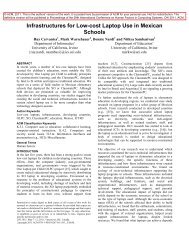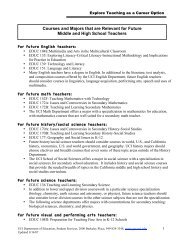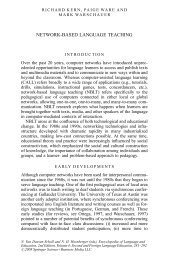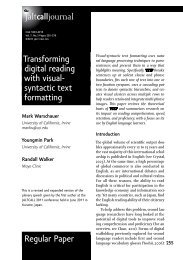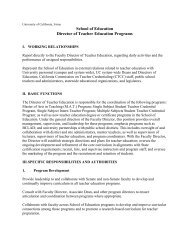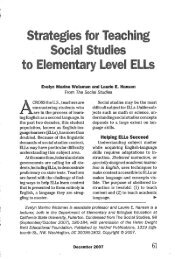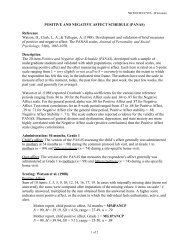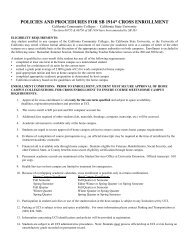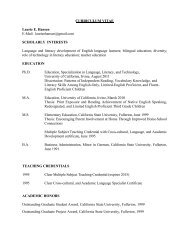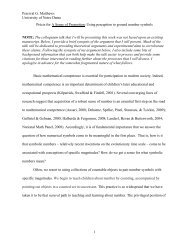Does Detracking Work? Evidence from a Mathematics Curricular ...
Does Detracking Work? Evidence from a Mathematics Curricular ...
Does Detracking Work? Evidence from a Mathematics Curricular ...
You also want an ePaper? Increase the reach of your titles
YUMPU automatically turns print PDFs into web optimized ePapers that Google loves.
<strong>Detracking</strong> 52005 school year, the district offered four main mathematics course options for 8 th graders: Pre-Algebra, Algebra Ia (the first year of a two-year Algebra course sequence), Algebra Ip (a oneyearAlgebra course), and Geometry. Just 32 percent of 2004-2005 8 th graders enrolled in the fullAlgebra I course, and less than 2 percent enrolled in Geometry. In the years that followed, thedistrict phased out the Pre-Algebra course offering, and gradually began placing more and more8 th graders in the 1 year Algebra and Geometry courses, putting more students on track to takeCalculus by graduation. By the 2007-08 school year, more than 70% of the district’s 8 th graderswere enrolled in the one-year Algebra course and an additional 13 percent were enrolled inGeometry.The intensification of 8 th grade mathematics enrollment that occurred between 2004-05and 2007-08 in Towering Pines was a largely exogenous shift and did not correspond withnoticeable changes in the district’s student composition. While Towering Pines isdemographically distinctive, the increase in academic mathematics course enrollments thatoccurred in the district epitomize the curricular changes that have been occurring in Americanmiddle and high schools over the last two decades. By examining changes in course enrollmentpatterns, classroom composition, and student achievement between 2004-05 and 2007-08 inTowering Pines, we seek to shed light on the effects of curricular intensification on: (1) thesocial organization of schools, (2) student exposure to advanced mathematics courses, and (3)the distribution of student achievement. In doing so we address changes in two key elements ofthe tracking system identified by Sorenson (1970): inclusiveness, the extent to which high-levelcoursework is available to students, and selectivity, the extent to which tracking produceshomogeneous learning environments.Constrained curriculum and the effects of curricular intensification


